Abstract
Intact cells of the alga Amphidinium carterae (Dinophyceae), and a cell-free system prepared from it, incorporated 14C, 3H-labelled mevalonate into lycopene, beta, beta-carotene, zeaxanthin, neoxanthin, diadinoxanthin and peridinin. The 14C/3H ratios of zeaxanthin, neoxanthin and diadinoxanthin formed from (2RS,3R)-[2-14C,2-3H2]mevalonate show that a hydrogen atom from C-2 of mevalonate is retained in the allene at C-8, and also at C-12 of peridinin. (3R,4R + 3S,4S)-[2-14C,4-3H1]Mevalonate gave 14C/3H ratios in peridinin which show that C-14 is lost. The three carbon atoms excised during the formation of the C37 carotenoid peridinin are C-13, C-14 and C-20 of neoxanthin.
Full text
PDF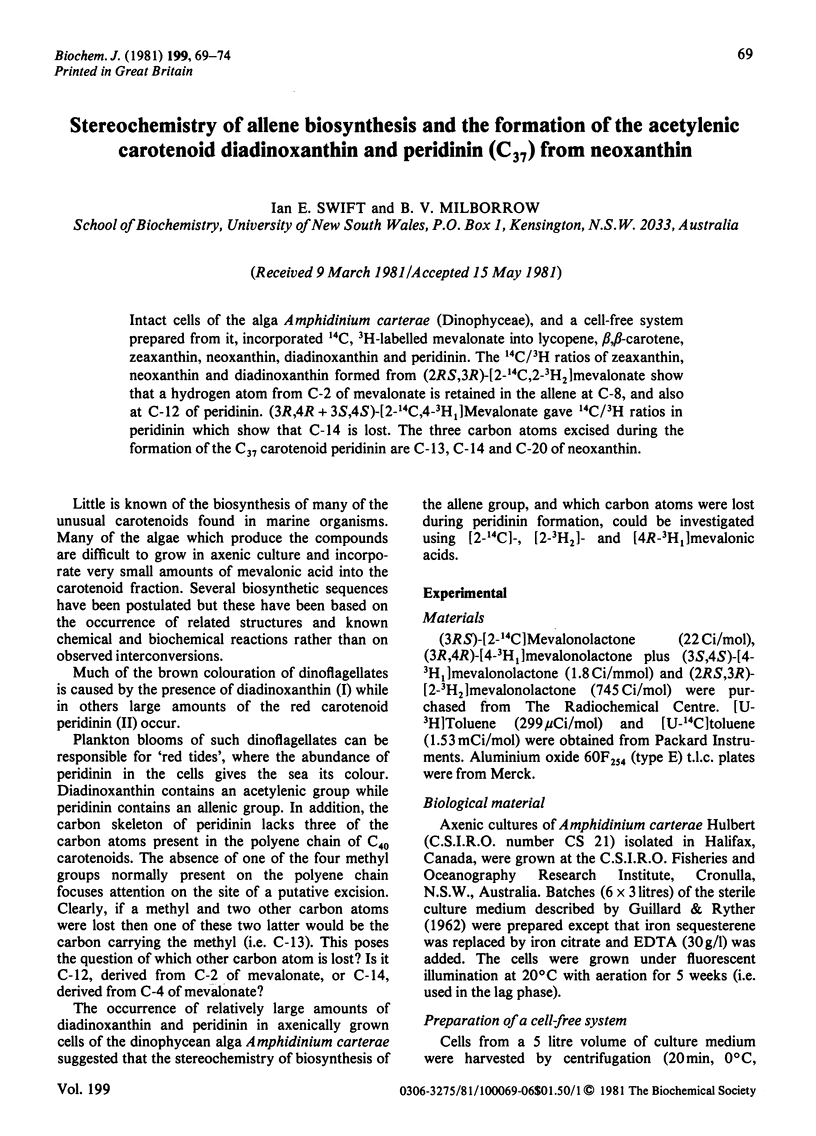
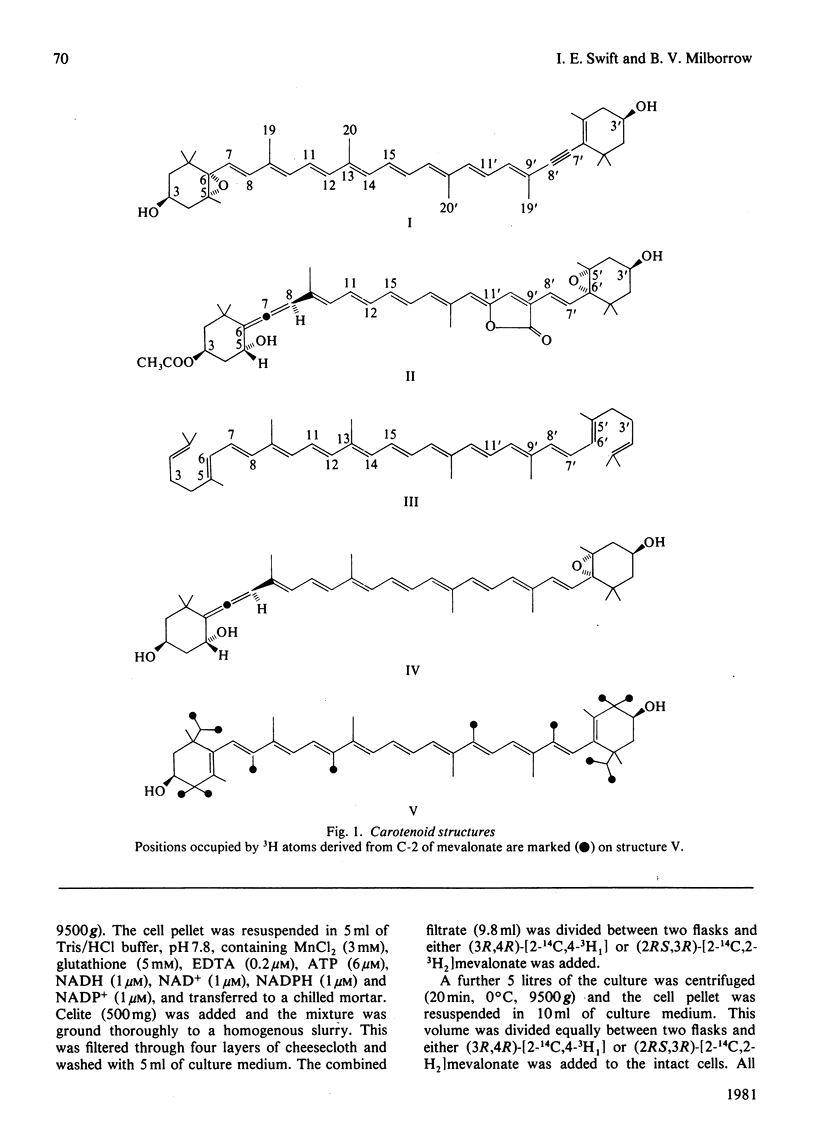
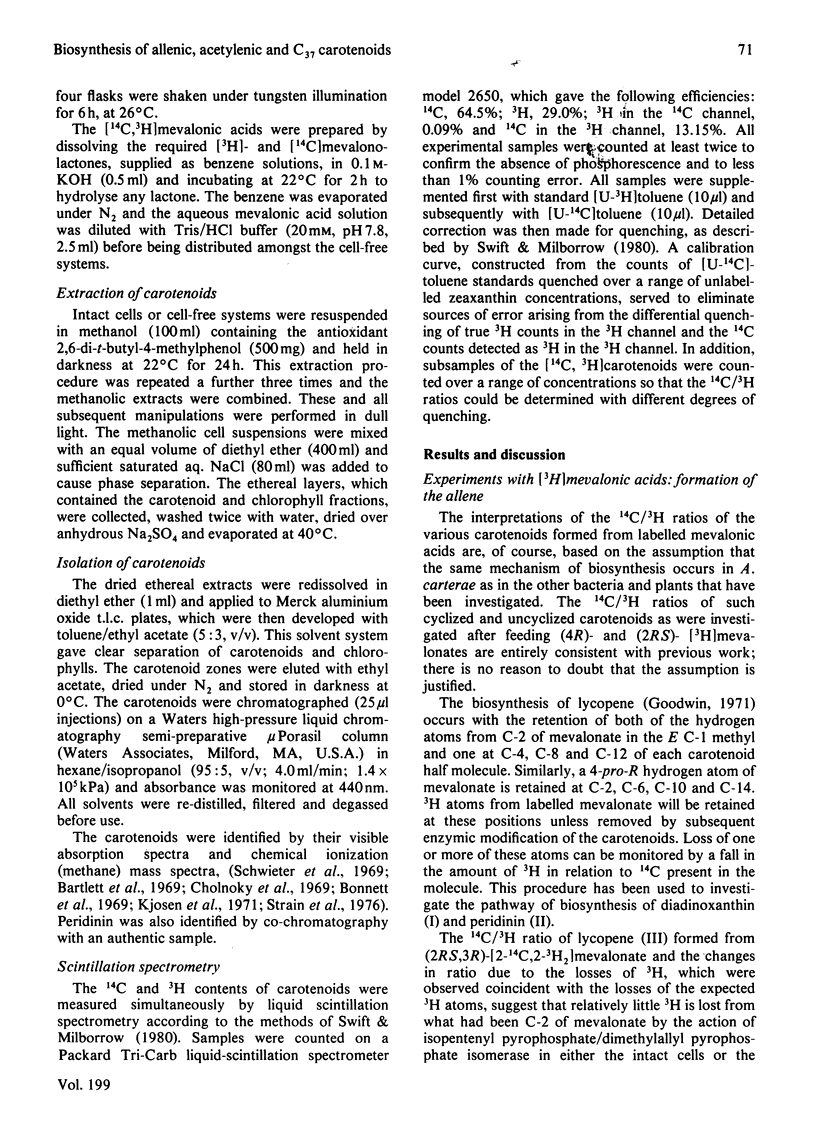
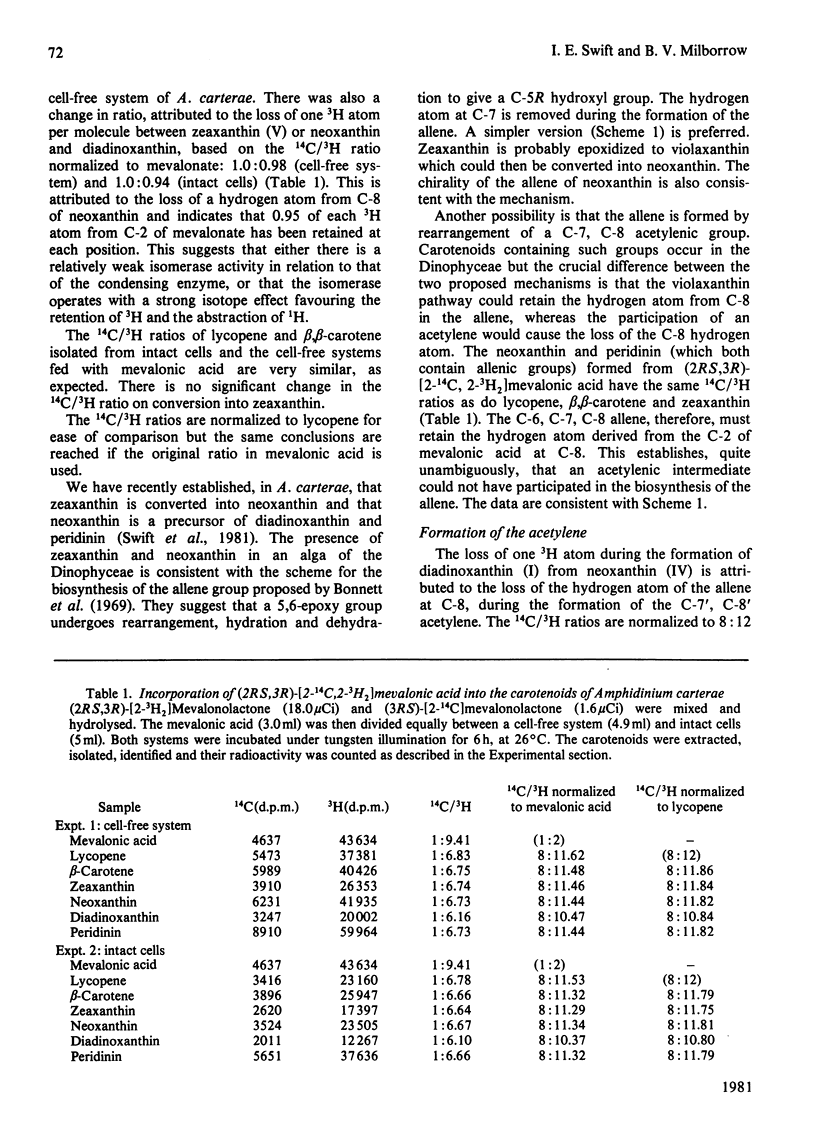
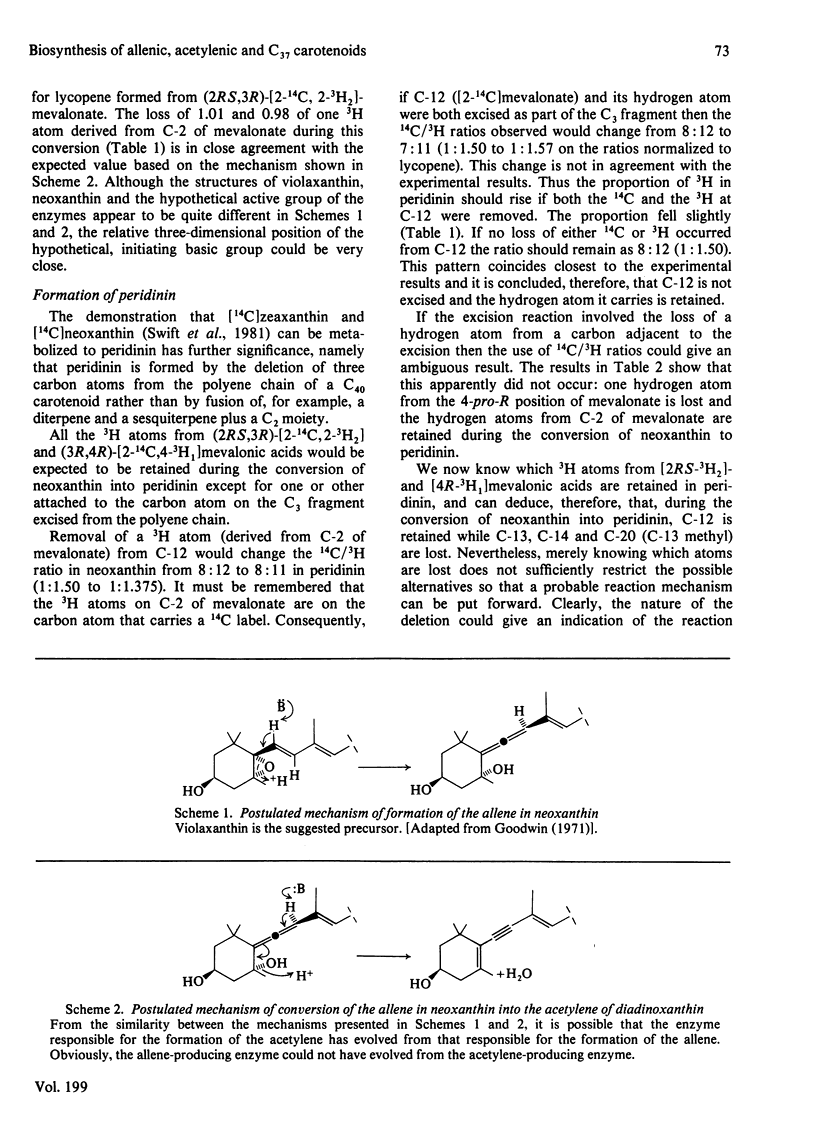

Selected References
These references are in PubMed. This may not be the complete list of references from this article.
- Bartlett L., Klyne W., Mose W. P., Scopes P. M., Galasko G., Mallams A. K., Weedon B. C., Szabolcs J., Tóth G. Optical rotatory dispersion of carotenoids. J Chem Soc Perkin 1. 1969;18:2527–2544. doi: 10.1039/j39690002527. [DOI] [PubMed] [Google Scholar]
- GUILLARD R. R., RYTHER J. H. Studies of marine planktonic diatoms. I. Cyclotella nana Hustedt, and Detonula confervacea (cleve) Gran. Can J Microbiol. 1962 Apr;8:229–239. doi: 10.1139/m62-029. [DOI] [PubMed] [Google Scholar]
- Schwieter U., Englert G., Rigassi N., Vetter W. Physical organic methods in carotenoid research. Pure Appl Chem. 1969;20(4):365–420. doi: 10.1351/pac196920040365. [DOI] [PubMed] [Google Scholar]
- Swift I. E., Milborrow B. V. Retention of the 4-pro-R hydrogen atom of mevalonate at C-2,2' of bacterioruberin in Halobacterium halobium. Biochem J. 1980 Apr 1;187(1):261–264. doi: 10.1042/bj1870261. [DOI] [PMC free article] [PubMed] [Google Scholar] [Retracted]


